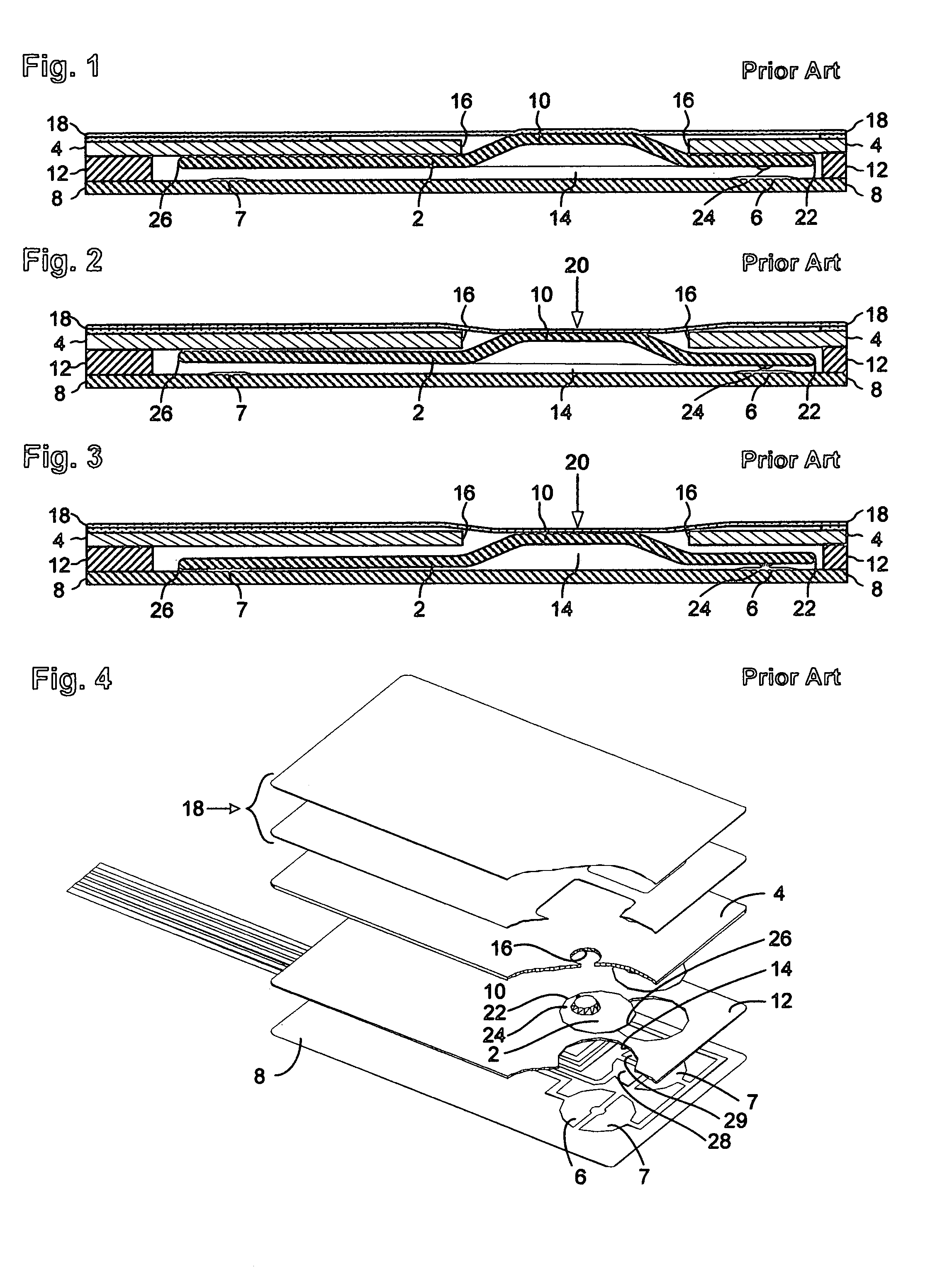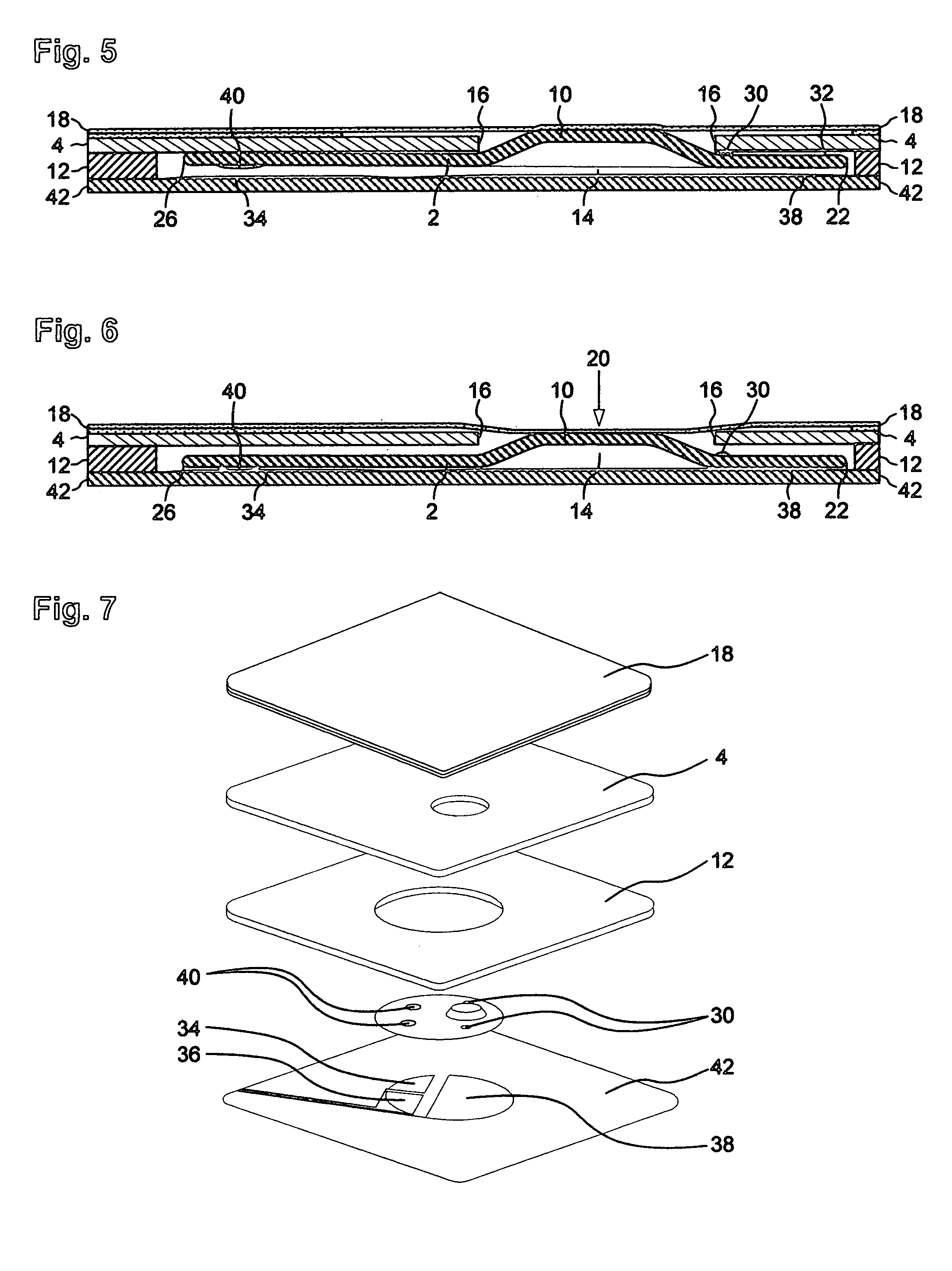Dual output magnetically coupled pushbutton switch
a pushbutton switch and magnetic coupling technology, applied in the direction of contacts, electrical equipment, contact surface shape/structure, etc., can solve the problems of losing first tactile feedback, no way to avoid this problem, and, if desired, only barely noticeable, so as to reduce the force, reduce the fear of accidentally taking an unwanted picture, and the effect of maximum magnetic attractive for
- Summary
- Abstract
- Description
- Claims
- Application Information
AI Technical Summary
Benefits of technology
Problems solved by technology
Method used
Image
Examples
Embodiment Construction
[0015]FIGS. 5 through 7 show a magnetically coupled pushbutton switch according to the present invention. The armature design and electrical conductor arrangement of the switch are the focus of the present invention, but an understanding of how a magnetically coupled pushbutton switch operates is necessary. The fundamental parts of a magnetically coupled pushbutton switch have already been described in the background section of this specification, and the same numbers carry substantially the same meaning in any of the several drawings in this specification. U.S. Pat. No. 6,556,112 includes a more detailed description of the parts, materials, construction and assembly of a magnetically coupled pushbutton switch, but that patent's reference numbers are different than those used in this description.
[0016]The only moveable part of a magnetically coupled pushbutton switch is the armature 32, a substantially flat piece of magnetic material that is electrically conductive. Soft steel coate...
PUM
 Login to View More
Login to View More Abstract
Description
Claims
Application Information
 Login to View More
Login to View More - R&D
- Intellectual Property
- Life Sciences
- Materials
- Tech Scout
- Unparalleled Data Quality
- Higher Quality Content
- 60% Fewer Hallucinations
Browse by: Latest US Patents, China's latest patents, Technical Efficacy Thesaurus, Application Domain, Technology Topic, Popular Technical Reports.
© 2025 PatSnap. All rights reserved.Legal|Privacy policy|Modern Slavery Act Transparency Statement|Sitemap|About US| Contact US: help@patsnap.com



